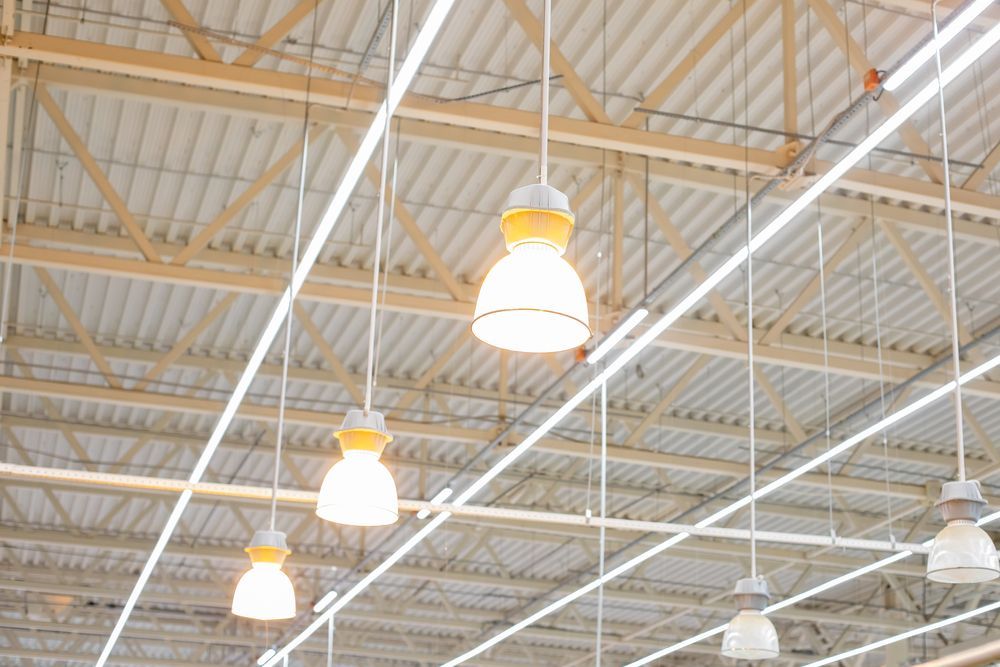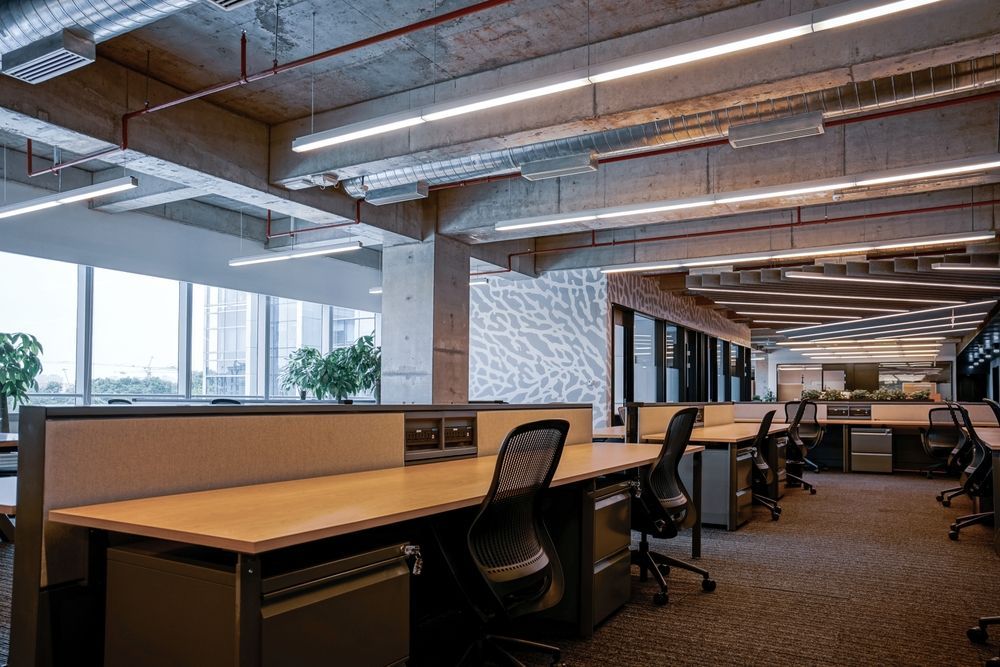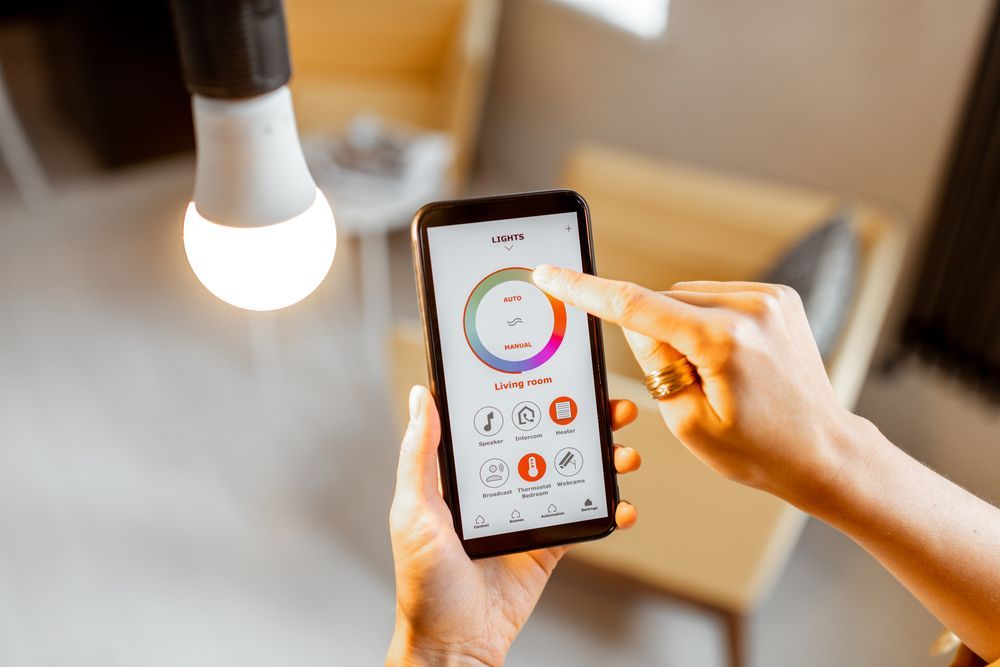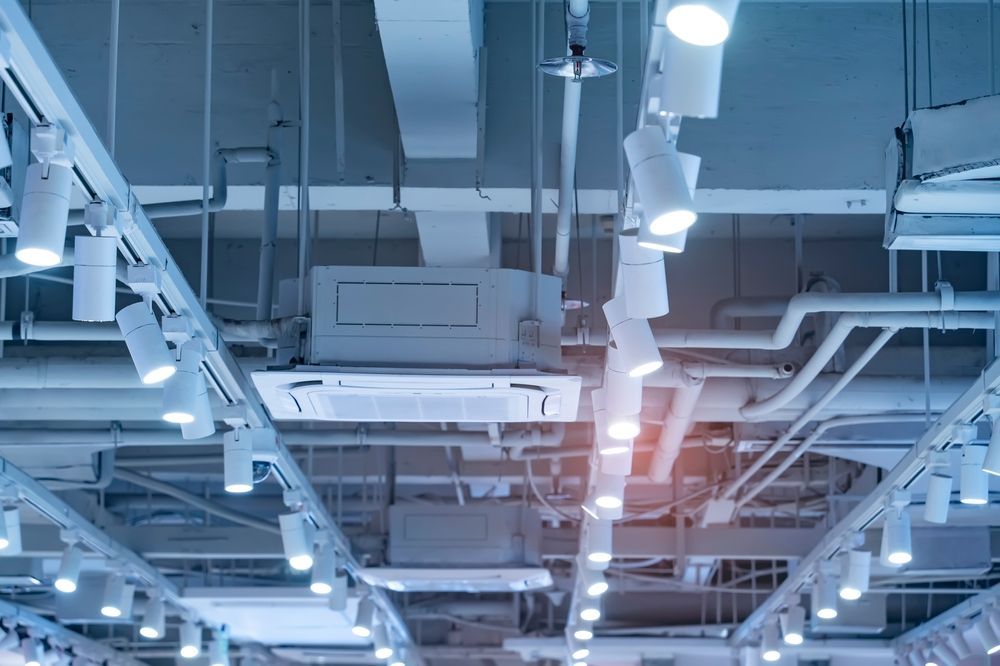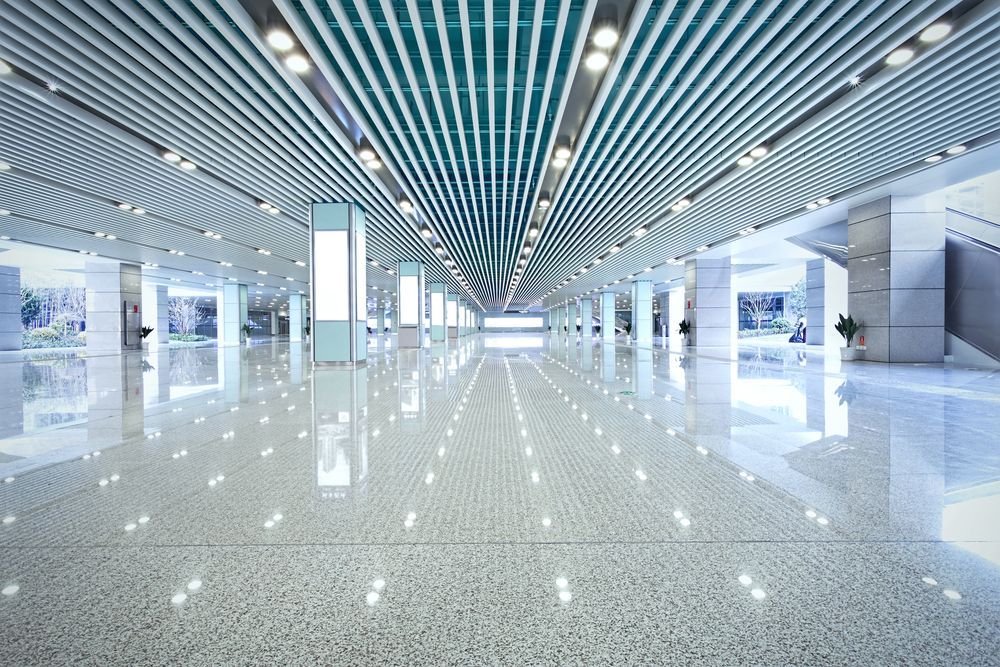The Evolution of Lighting Technology: Trends Shaping the Future
The Dynamic Landscape of Lighting Technology
As an engineer or electrician, you are undoubtedly aware that lighting technology has undergone a remarkable transformation over the years. The evolution of lighting technology has not only enhanced the way we illuminate spaces but also significantly impacted energy efficiency, sustainability, and integration with modern systems. In today's fast-paced world, staying abreast of lighting technology trends is crucial for ensuring that your projects remain at the forefront of innovation.
Lighting technology trends are shaping the future in ways that are both exciting and challenging. As professionals who value innovative and efficient solutions, you are likely seeking out sustainable lighting solutions that align with your environmental consciousness and project goals. This article delves into the latest trends in lighting technology, offering insights into what the future holds for this essential aspect of modern infrastructure.
Smart Lighting Systems: The Intersection of Technology and Illumination
The integration of smart technology into lighting systems is revolutionizing the way we manage and control illumination in various environments. Smart lighting systems utilize advanced sensors, wireless communication, and data analytics to optimize energy use and enhance user experience. For engineers and electricians, this means greater flexibility and control over lighting settings, allowing for customization according to specific needs.
One of the key benefits of smart lighting is its ability to adapt to changing conditions. For instance, daylight harvesting technology automatically adjusts artificial lighting based on the amount of natural light available, reducing energy consumption. Additionally, occupancy sensors ensure that lights are only on when needed, further contributing to energy savings. By embracing smart lighting systems, you can offer your clients solutions that are not only energy-efficient but also highly responsive to their needs.
LED Technology: Pioneering the Future of Lighting
LED technology has become a cornerstone of modern lighting solutions, offering unparalleled energy efficiency and longevity. As an industry professional, you are likely familiar with the advantages of LEDs, including their low power consumption and reduced maintenance costs. However, the future of LED technology promises even more exciting developments.
Innovations in LED technology are leading to the creation of tunable white lighting, which allows users to adjust color temperatures to suit different tasks and moods. This capability is particularly beneficial in commercial and industrial settings, where lighting needs may vary throughout the day. Furthermore, advancements in LED design are enabling the production of more compact and versatile fixtures, providing greater design freedom for your projects.
Human-Centric Lighting: Enhancing Well-Being Through Illumination
Human-centric lighting is an emerging trend that focuses on the impact of lighting on human health and well-being. By mimicking natural light patterns, human-centric lighting aims to support circadian rhythms, improve mood, and enhance productivity. This approach is gaining traction in various sectors, including healthcare, education, and office environments.
Advancements in Sustainable Lighting Solutions
In today's environmentally conscious world, the demand for sustainable lighting solutions is more pressing than ever. As professionals committed to reducing environmental impact, you understand the importance of adopting technologies that promote energy conservation and sustainability. The future of lighting is increasingly focused on minimizing carbon footprints and enhancing efficiency.
Sustainable lighting solutions are characterized by the use of eco-friendly materials, energy-efficient technologies, and designs that prioritize longevity. Solar-powered lighting systems, for instance, harness renewable energy, offering a clean alternative to traditional power sources. Moreover, innovations in battery technology are enhancing the storage capacity and reliability of these systems, making them viable for a wider range of applications.
Another aspect of sustainable lighting is the implementation of circular economy principles. This involves designing lighting products that are easily recyclable or upgradable, reducing waste and extending the life cycle of the product. By integrating these sustainable practices into your projects, you can contribute to a more sustainable future while meeting the expectations of environmentally conscious clients.
Integration with IoT: Lighting in the Age of Connectivity
The Internet of Things (IoT) is revolutionizing various industries, and lighting technology is no exception. The integration of IoT with lighting systems opens up new possibilities for connectivity and control, transforming how lighting is managed in both residential and commercial settings. As you explore lighting technology trends, understanding the role of IoT is crucial for staying ahead in the field.
IoT-enabled lighting systems allow for remote monitoring and control, providing real-time data on energy consumption and system performance. This level of connectivity enables predictive maintenance, where potential issues can be identified and addressed before they lead to system failures. For engineers and electricians, this means enhanced reliability and reduced downtime for lighting systems.
Moreover, IoT integration facilitates seamless communication between lighting systems and other smart devices, creating a cohesive and efficient building management system. This interconnectedness can lead to improved energy management, enhanced security, and a more personalized user experience. By leveraging IoT in your lighting projects, you can deliver innovative solutions that meet the evolving needs of modern infrastructure.
Lighting Design: Merging Aesthetics with Functionality
While functionality is a critical aspect of lighting technology, the importance of design should not be overlooked. Lighting design trends are increasingly focusing on the blend of aesthetics and functionality, resulting in solutions that are not only efficient but also visually appealing. As a professional in the field, incorporating design considerations into your projects can elevate the overall impact of your lighting solutions.
Modern lighting design emphasizes the use of sleek and minimalist fixtures that complement the architectural elements of a space. The trend towards customizable lighting options allows for the creation of unique lighting experiences that cater to specific preferences and requirements. Whether it's accentuating architectural features or creating a dynamic ambiance, thoughtful lighting design can significantly enhance the user experience.
Furthermore, the use of advanced materials and technologies is enabling the development of innovative lighting designs. OLEDs (Organic Light Emitting Diodes), for example, offer flexibility and thinness, allowing for creative applications in various settings. By staying informed about the latest design trends, you can offer your clients solutions that are both functional and aesthetically pleasing.
Lighting Controls: Enhancing Efficiency and User Experience
Lighting controls play a pivotal role in optimizing energy use and enhancing the user experience. As lighting technology evolves, the sophistication of control systems continues to advance, offering greater precision and flexibility. For engineers and electricians, understanding the latest developments in lighting controls is essential for delivering efficient and user-friendly solutions.
Modern lighting control systems offer features such as dimming, scheduling, and zoning, allowing for tailored lighting settings that meet specific needs. Advanced control interfaces, including mobile apps and voice-activated systems, provide users with intuitive and convenient ways to manage their lighting environments. These systems not only improve energy efficiency but also contribute to a more comfortable and adaptable space.
In addition to traditional controls, the emergence of AI-driven lighting systems is set to redefine the future of lighting management. These systems use machine learning algorithms to analyze user behavior and preferences, automatically adjusting lighting settings to optimize comfort and efficiency. By integrating advanced lighting controls into your projects, you can offer cutting-edge solutions that align with the demands of modern technology.
Energy Harvesting: Lighting Systems Powered by the Environment
As the lighting industry continues to innovate, energy harvesting has emerged as a promising trend that leverages environmental energy sources to power lighting systems. This approach is particularly appealing to those seeking sustainable lighting solutions that minimize reliance on conventional power sources. By capturing energy from ambient light, temperature fluctuations, vibrations, and other environmental factors, energy harvesting systems offer a self-sustaining lighting solution that reduces energy consumption and environmental impact.
For engineers and electricians, integrating energy harvesting into lighting projects can lead to significant cost savings and enhanced sustainability. These systems are ideal for applications in remote or off-grid locations where traditional power infrastructure may be limited. By exploring the potential of energy harvesting, you can provide your clients with innovative solutions that align with their sustainability goals.
Biophilic Lighting: Connecting with Nature
Biophilic lighting is a design philosophy that seeks to connect indoor environments with the natural world. This trend is gaining popularity as more people recognize the benefits of incorporating natural elements into their living and working spaces. Biophilic lighting aims to create a harmonious balance between artificial and natural light, enhancing well-being and productivity.
For professionals in the lighting industry, biophilic lighting presents an opportunity to blend technology with nature. By incorporating features such as dynamic lighting patterns that mimic natural light cycles, you can create environments that promote relaxation and focus. This approach is particularly effective in settings where access to natural light is limited, such as underground or windowless spaces. By embracing biophilic lighting, you can offer your clients solutions that enhance their connection to the natural world while meeting their lighting needs.
3D Printing: Revolutionizing Lighting Manufacturing
The advent of 3D printing technology has opened up new possibilities for the design and manufacturing of lighting fixtures. This innovative approach allows for the creation of complex and customized designs that were previously difficult or impossible to achieve through traditional manufacturing methods. For engineers and electricians, 3D printing offers the flexibility to experiment with unique designs and materials, resulting in bespoke lighting solutions that meet specific project requirements.
3D printing also offers significant advantages in terms of sustainability and cost-effectiveness. By reducing material waste and production time, this technology can lead to more efficient and environmentally friendly manufacturing processes. As you explore the potential of 3D printing in your lighting projects, you can deliver cutting-edge solutions that cater to the evolving needs of your clients.
Lighting as a Service (LaaS): A New Business Model
The concept of Lighting as a Service (LaaS) is transforming the way lighting solutions are delivered and managed. This business model involves offering lighting systems as a subscription service, where clients pay for the lighting they use rather than purchasing the equipment outright. LaaS provides clients with access to the latest lighting technology without the upfront costs and maintenance responsibilities associated with ownership.
For lighting professionals, LaaS presents an opportunity to build long-term relationships with clients by providing ongoing support and updates. This model also allows for greater flexibility in adapting to changing lighting needs, as clients can easily upgrade or modify their systems as required. By offering LaaS, you can provide your clients with a cost-effective and hassle-free lighting solution that meets their evolving needs.
Genesis Lighting Control: Your Partner in Lighting Innovation
As you navigate the dynamic landscape of lighting technology trends, Genesis Lighting Control stands ready to support you with innovative solutions tailored to your needs. Our expertise in designing and repairing lighting systems ensures that you receive high-quality, customizable, and scalable solutions that enhance project outcomes.
Whether you are looking to integrate smart lighting systems, explore sustainable lighting solutions, or leverage the latest advancements in lighting technology, our team is here to assist you. With a commitment to energy efficiency, reliability, and sustainability, we are dedicated to helping you achieve your project goals.
To learn more about how Genesis Lighting Control can support your lighting needs, we invite you to reach out to Ron Liscum at TLCSupport@glcs.ca. Let us partner with you in creating lighting solutions that illuminate the future.

